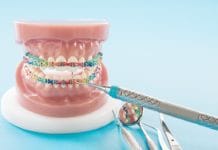As rewarding as a dental hygiene career can be, there will always be challenges. One of the biggest frustrations in dental hygiene practice is patients’ non-compliance with home care instructions. It is important to figure out what is holding them back.
Possibilities could include the lack of skill or dexterity, not understanding the instructions given, or simply not valuing their own health. However, one of the most common root causes of neglect in personal hygiene is that it is not a part of the patient’s routine. “I just forget” is probably the most common response when asked what is holding them back from following through.
Of course, dental hygienists cannot babysit patients or make them do something they do not want to do. On the other hand, many dental patients sincerely wish to improve their oral health but have trouble forming new habits.
Habit Formation
By looking into the psychology of habit formation, we may be able to provide tools that can help our patients make valuable changes. One definition of the word habit is “actions that are triggered automatically in response to contextual cues that have been associated with their performance.”2 We want them to form a true habit ─ something they do without thinking about when they are in a certain time of day or exposed to a certain trigger.
Simply having the determination to do something new is not enough to make it part of a life routine. Our mind is designed to make our life easier by creating mental shortcuts to do things automatically without too much intellectual investment. The challenge is to program our brains into incorporating a desired behavior into our collection of automatic routines.
The first step in forming a new habit is to make a goal. The goal should be small enough to be easily achievable, even laughable.1 For example, asking a patient who never cleans interdentally to floss every day may seem unachievable, so they may not even try. But what about flossing on Monday, Wednesday, and Friday? Or flossing just the quadrant that we scaled every day for a week? Those goals might seem more doable.
Allowing the patient to define their own goal will help them commit to action. Explain to the patient that though an ideal goal (such as cleaning interdentally every day) is what we are truly aiming for, we need to create a roadmap to get there. Guide them using open-ended questions to determine what a realistic first step would be for them.
Say When
A logical next step in forming a new healthy habit would be defining the context. In other words, when can the patient perform the task? Research on habit formation has shown that behavior is likely to become habitual when it is frequently and consistently performed in the same context.3 This means that the behavior needs to be prompted by a consistent time or setting.
Even though it might seem helpful to be flexible in suggesting times, such as the idea that the patient can floss any time during the day until the habit is formed, it needs to be tied to a trigger. It is best to choose a context that happens every day. Explore what habits the patient has already, such as watching television after dinner. This might be an ideal time to remember to clean interdentally.
By connecting a new behavior to an already existing habit, the chance of success is greatly increased. Each time the new behavior (cleaning interdentally) is performed when triggered (watching TV), it becomes more automatic, requiring less effort and motivation.
Failing the Habit
Even the most motivated patients will invariably fail at first. So, an important part of the habit-forming discussion should be about what will be done if the goal is not initially met.1
Consider if the goal is cleaning interdentally Monday, Wednesday, and Friday. What happens if the patient goes out on Friday after work and misses their new flossing routine? Allow the patient to explore a possible contingency plan. Maybe he or she could “catch up” on Saturday morning or just wait until Monday and try again.
The important thing is that one slip-up does not mean total failure. It’s a slip-up, nothing more, and getting back on track needs to be easy. They could also avoid a slippery slope into non-compliance if they commit to not missing twice.1 If they miss the goal one day, they need to get back on track by the next opportunity.
Measuring Success
For some patients, having a way to measure success helps. It could be checking things off on a calendar or having a scheduled check-in with the provider. By recognizing success, the patient’s confidence is built up, and they are more likely to continue.
As far as how long it will take for a new habit to be an automatic behavior, the common belief of 21 days is probably not accurate. Research shows that the average is around 66 days, but it can vary widely depending on the individual and the desired behavior.3
The most important message for a patient is that with time the new habit will become easier. The longer they reinforce the behavior in the context they defined, the more automatic it will become and require less effort.
Helping patients form healthy habits at home may be the most difficult task a hygienist has, but it can be very rewarding if we have a motivated patient. Even small changes can create improvement in health. Once small goals are achieved, larger goals seem more attainable. Seeing results in less bleeding, better periodontal measurements, and better esthetics will motivate even more. It is up to us as hygienists to help the patient get the ball rolling!
Before you leave, check out the Today’s RDH self-study CE courses. All courses are peer-reviewed and non-sponsored to focus solely on high-quality education. Click here now.
Listen to the Today’s RDH Dental Hygiene Podcast Below:
References
- Clear, J. 3 Simple Things You Can Do Right Now to Build Better Habits. (n.d.). James Clear. Retrieved from https://jamesclear.com/good-habits
- van der Weiden, A., Benjamins, J., Gillebaart, M., et al. (2020, March 27). How to Form Good Habits? A Longitudinal Field Study on the Role of Self-Control in Habit Formation. Frontiers in Psychology. Retrieved from https://www.frontiersin.org/articles/10.3389/fpsyg.2020.00560/full
- Gardner, B., Lally, P., Wardle, J. Making Health Habitual: The Psychology of ‘Habit-formation’ and General Practice. British Journal of General Practice. 2012; 62(605): 664-66. Retrieved from https://www.ncbi.nlm.nih.gov/pmc/articles/PMC3505409/
















